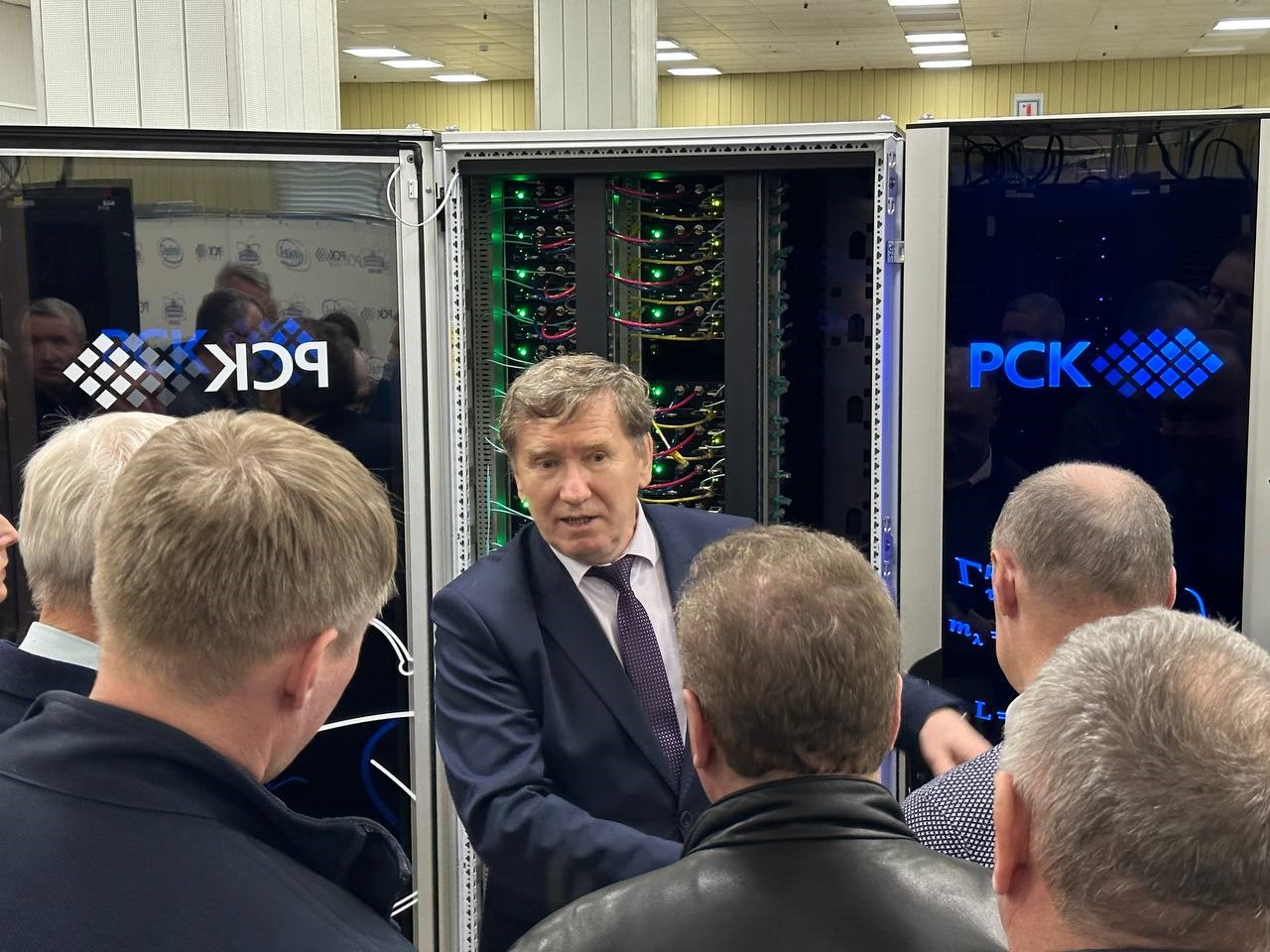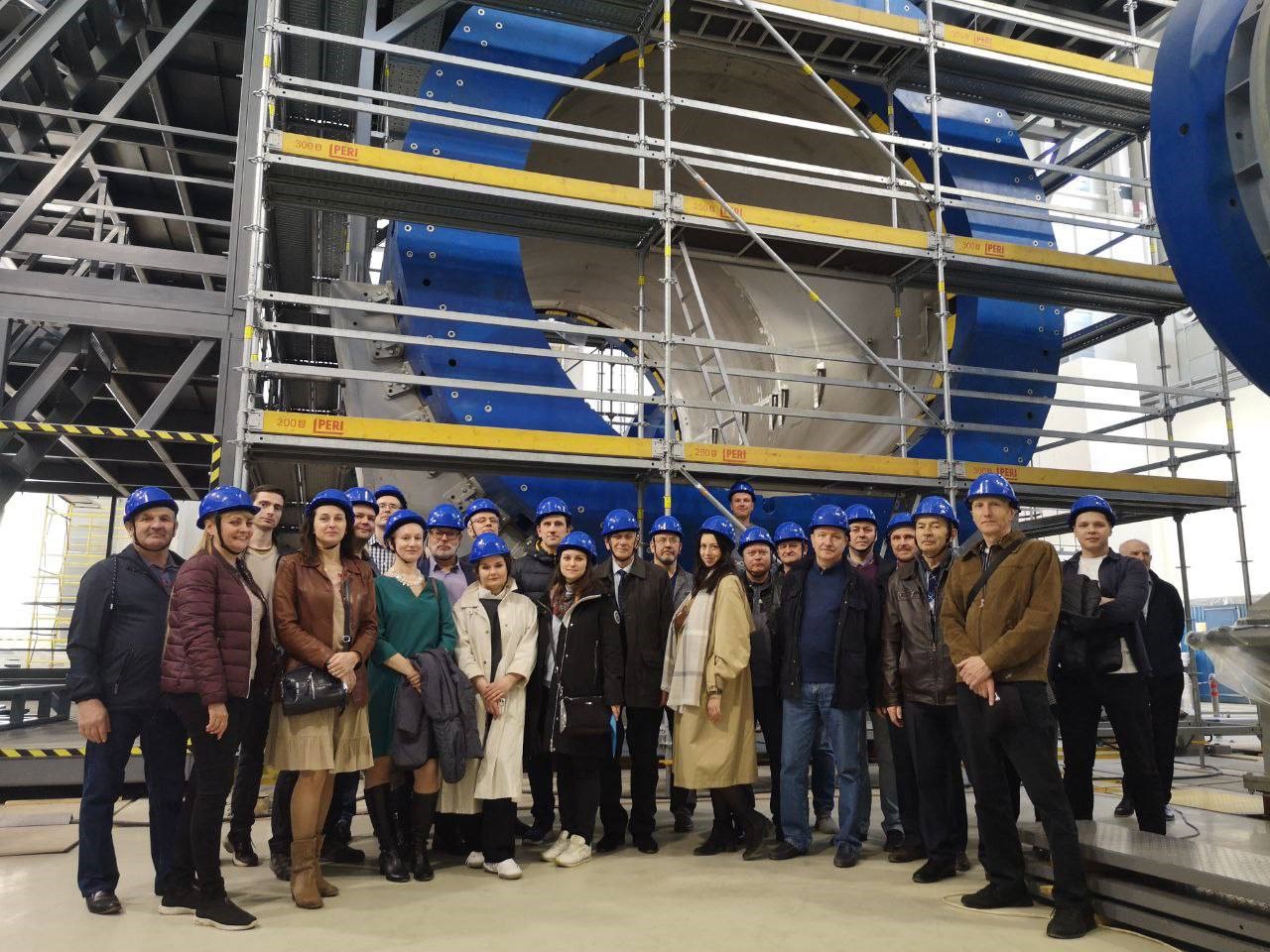Visit of the Dubna SCC delegation to JINR
News, 24 April 2023
On 19 April 2023, the Meshcheryakov Laboratory of Information Technologies hosted specialists of the Dubna Satellite Communications Center (SCC), the largest teleport in Russia and Eastern Europe.
MLIT Scientific Leader Vladimir Korenkov welcomed the delegation and briefly spoke about the major directions of MLIT’s activities, including the JINR Multifunctional Information and Computing Complex (MICC); special attention was paid to the development stages of JINR external communications. Cooperation between MLIT and the Dubna SCC started in the late 1980s. This stage of collaboration resulted in the creation of the first satellite communication channel between the Dubna SCC and the HEPNET network node in Gran Sasso (Italy), which allowed JINR users to begin working with CERN and other centers using Internet protocols. The next stage of our cooperation led to the creation of an optical communication channel JINR – Dubna SCC – Shabolovka and connection to the RBNet global network. In 1997, the bandwidth of this channel was 2 Mbps; in 2001, it was 622 Mbps; in 2005, it reached 2 Gbps, and in 2009, it amounted to 20 Gbps. At present, we continue to use this computer communication backbone, and the total bandwidth of our communications is three channels of 100 Gbps. In addition to the Dubna – Moscow backbone network, jointly with the Dubna SCC, the first satellite channel in the Crimea, JINR – Dubna SCC – Dubna resort hotel in Alushta, was created in 2002. For more than 40 years, the Dubna SCC has been a reliable partner in all our projects on the development of the JINR communication infrastructure.
The specialists of the Dubna SCC visited the museum of computer technology, which is located in the MLIT machine hall, got acquainted with the MICC components, including the Govorun Supercomputer, and went to the MICC control room, where the status of all MICC elements is monitored in 24×7 mode.
After MLIT, the Dubna SCC delegation visited VBLHEP, where they learned about the NICA accelerator complex, the principles of its operation and ongoing research. Together with VBLHEP specialists Alexander Cheplakov and Yury Panebrattsev, the employees of the Dubna SCC were able to see the MPD experiment building, including the 70-ton superconducting solenoid, and walk along the collider tunnel, and Dmitry Dryablov spoke about and showed working accelerators, namely, the Booster and the Nuclotron.


